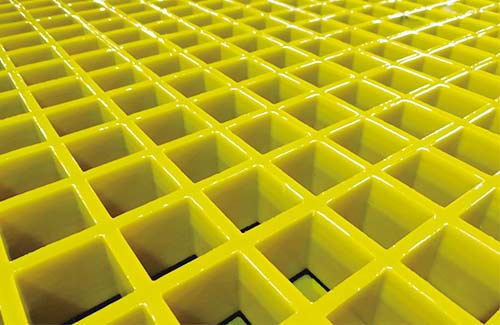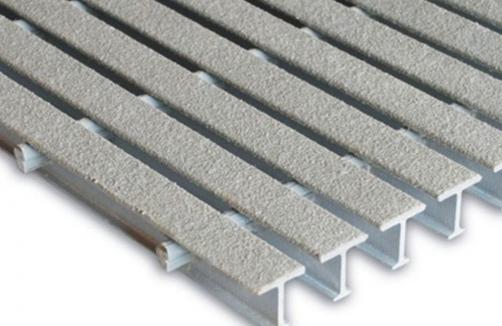Exploring the Benefits of FRP Grating for Industrial Applications
What makes Fiber Reinforced Polymer (FRP) grating a preferred choice for industrial applications? How does it compare to traditional materials like steel, aluminum, and concrete? These questions are central to understanding why FRP grating is revolutionizing the way industries approach flooring, walkways, and platform solutions.
What is FRP Grating?

FRP grating, also known as fiber-reinforced polymer grating, is a composite material made from a combination of fiberglass and a polymer matrix. This unique composition results in a material that is lightweight, strong, and corrosion-resistant. Unlike traditional materials, FRP grating does not rust, corrode, or require painting, making it an ideal choice for environments where moisture, chemicals, and harsh conditions are prevalent.
Why Choose FRP Grating for Industrial Applications?
Corrosion Resistance
One of the primary benefits of FRP grating is its exceptional corrosion resistance. Industrial environments often expose flooring to chemicals, acids, and moisture, which can quickly deteriorate traditional materials. FRP grating, however, remains unaffected by these elements, ensuring long-term durability and reducing maintenance costs.
Weight Reduction
Another significant advantage is the lightweight nature of FRP grating. Compared to steel, FRP grating is 75% lighter, making it easier to handle, install, and transport. This weight reduction also minimizes the load on supporting structures, reducing the need for additional reinforcement and lowering overall project costs.
Strength and Load-Bearing Capacity
Despite its lightweight design, FRP grating offers remarkable strength and load-bearing capacity. It can withstand heavy loads without bending or deforming, making it suitable for industrial applications such as bridges, mezzanines, and loading docks. This strength ensures that the grating remains reliable and safe under demanding conditions.
Safety Features
FRP grating is designed with safety in mind. It has a non-slip surface, reducing the risk of slips and falls. Additionally, its open grid structure allows for the passage of water, preventing the accumulation of debris and further enhancing safety.
Environmental Benefits
Choosing FRP grating also contributes to environmental sustainability. Unlike steel, which requires energy-intensive production processes, FRP grating is manufactured using recycled materials and generates less waste. This eco-friendly approach makes FRP grating a responsible choice for industries looking to reduce their environmental footprint.
How Does FRP Grating Compare to Traditional Materials?
When compared to steel, aluminum, and concrete, FRP grating offers several distinct advantages. Steel, while strong, is prone to rust and corrosion, requiring frequent maintenance. Aluminum, although lightweight, lacks the durability needed for heavy industrial use. Concrete, on the other hand, is extremely heavy and can crack over time, necessitating repairs.
FRP grating outperforms these materials in terms of durability, maintenance requirements, and overall cost-effectiveness. Its resistance to corrosion and lightweight design make it a superior choice for industrial applications.
Real-World Applications
FRP grating is widely used in various industrial settings. It is commonly installed in chemical plants, oil refineries, power stations, and water treatment facilities. For example, a chemical plant in Texas replaced its traditional steel grating with FRP grating, resulting in a 50% reduction in maintenance costs and a significant increase in safety.
Another notable application is in bridge construction. FRP grating is used to create pedestrian walkways and vehicle decks, offering a durable and lightweight alternative to traditional bridge materials. These real-world examples demonstrate the versatility and effectiveness of FRP grating in industrial applications.
Sharing Insights with Industry Professionals
If you are involved in industrial construction or maintenance, sharing insights about FRP grating can be beneficial. For instance, a civil engineer who worked on a recent FRP grating project in a manufacturing plant shared the following: “Switching to FRP grating was a game-changer. Not only did it reduce our maintenance costs, but it also improved safety on the plant floor. The non-slip surface and corrosion resistance made it the perfect choice for our environment.”
This kind of firsthand experience can help other professionals make informed decisions about incorporating FRP grating into their projects.
Conclusion
FRP grating offers numerous benefits for industrial applications, including corrosion resistance, weight reduction, strength, safety features, and environmental sustainability. By comparing it to traditional materials, we see why FRP grating is emerging as the go-to solution for industries seeking durable, low-maintenance, and cost-effective flooring solutions. Whether you are involved in construction, engineering, or facility management, understanding the advantages of FRP grating can lead to more efficient and safer industrial environments.







